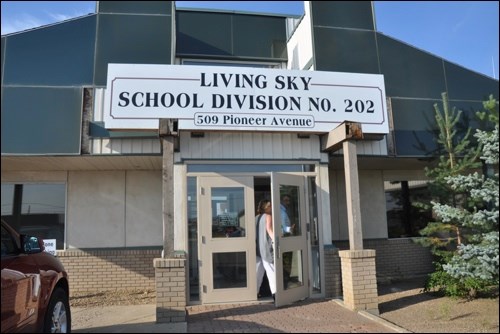Despite the overall increase of provincial funding toward education compared with last year, Living Sky School Division is receiving less funding than last year.
According to the 2018-19 provincial budget document, Saskatchewan’s school divisions will receive $1.87 billion in operating funding for 2018-19, a $30 million increase over last year. There are 28 school divisions in the province.
“Living Sky School Division is very pleased that Premier Scott Moe is committed to keeping his promise in his leadership campaign,” Living Sky board chair Ronna Pethick said last week. Pethick also thanked Moe and Minister of Education Gord Wyant.
Last year, 2017-18, the province funded school divisions with $54 million less than 2016-17. In 2017-18, Living Sky received $3.2 million less from the government than the previous year. The division also had a cash deficit of $2.8 million, making for a deficit, chief financial officer Lonny Darroch said last year, of approximately $6 million.
The total funding Living Sky School Division will receive from the government for 2018-19 will be $59,700,516.
The number is $653,000 less than last year. Most of the decrease, according to board chair Ronna Pethick, was due to decreased student enrolment.
The division keeps track of how many students are in classes. Enrolments on Sept. 30, 2017, were 5,576. Projected enrolments for the upcoming period are 5,453.
Pethick said rural Saskatchewan is seeing a trend in which graduating Grade 12 classes are relatively large, while kindergarten classes are relatively small.
Pethick said this is in part due to the oil and gas sector, along with other trends in rural Saskatchewan.
“We’re still analyzing our data and still analyzing why we had such a reduction,” Pethick said.
If the division didn’t have fewer projected students, Pethick said, Living Sky would work with a status quo budget.
Now that Living Sky knows its provincial funding, Living Sky budget planning is underway. Budget planning is a scheduled agenda item at upcoming meetings, and a budget must be passed by the end of June.
Pethick said such timelines, and what could be reduced, are currently uncertain.
Living Sky reduced expenses between 2016-17 and 2017-18 different ways, including increasing the pupil-to-teacher ratio.
The pupil-to-teacher ratio is a measurement that accounts for the number of educational staff (including teachers, student services, and career guidance staff) per student. The logic is the lower the pupil-to-teacher ratio, the more time, theoretically, staff can dedicate to each student.
The pupil-to-teacher ratio takes into account more than average class size. It isn’t to be confused with average class size.
Increasing the pupil-to-teach ratio last year resulted in the division needing 16 less full-time teaching positions. However, no teachers were laid off due to retirements, resignations, and former staff moving to other school divisions.
In 2017-18, the division reduced its number of EAs from 185 in 2016-17 to 163.
Regarding the perception of fairness of the provincial government funding education according to student enrolments, Pethick said, “I would say it’s fair, and the province would certainly say that it’s fair, and the Ministry of Education would say that it’s fair.”
Amalgamating school boards was an idea previously discussed between government and school boards to save money, but Pethick said discussion surrounding the matter has stopped.
Pethick also said the division is not prepared to draw from its reserves.
School boards used to be able to set their own mill rates, which Pethick said would allow the division to advocate locally. Taxpayers were able to directly see what they funded.
Approximately 40 per cent of the division’s students are First Nations, Pethick said. Education funding for First Nations students who live on-reserve is paid for by the federal government, while provinces fund First Nations students who live off-reserve.
Further cuts to education, as was seen last year, don’t appear to be in future plans.
“I think [decision-makers] clearly heard this past year that education is important and is one of the most important things they can do because we’re educating our youth to be tomorrow’s leaders.”
“Our priority is our students,” Pethick said of Living Sky School Division.




